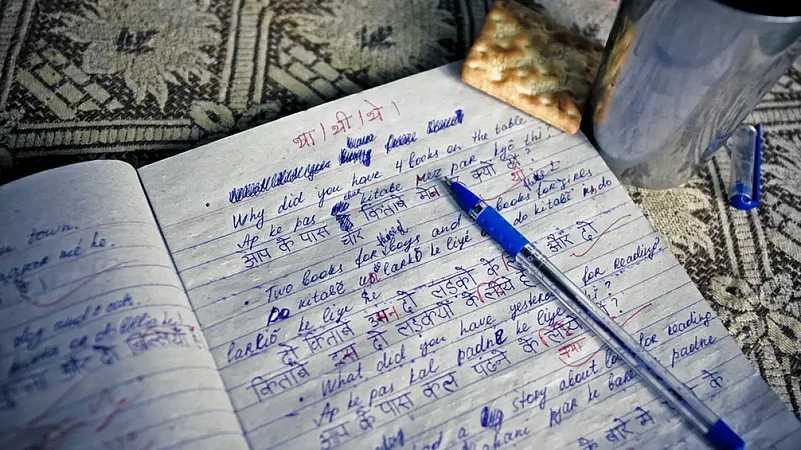In a recent move, the Bihar government has decided to set up two new academies to promote local dialects -- Surjapuri and Bajjika -- spoken in politically influential 'Seemanchal' and 'Bajjikanchal' regions of the state.
The decision to constitute separate centres here for fostering Bajjika and Surjapuri culture and literature was taken at a recent meeting chaired by Chief Minister Nitish Kumar, said Dipak Kumar Singh, the additional chief secretary (ACS) of the education department.
What are the Surajpuri and Bajjika dialects?
Surjapuri, a mix of Hindi, Maithili and Bangla, is spoken in the Seemanchal region -- comprising Purnia, Katihar, Kishanganj and Arararia districts. Bajjika, similar to Maithili, is the language of people living in north-west Bihar areas of Muzaffarpur, Vaishali, West Champaran and Sheohar.
Advertisement
The dialect is largely spoken by Surjapuri Muslims who make up 70 per cent Muslim population of the Kishanganj district.
The dialect originates from the Surjapur paragana, which reportedly does not exist anymore.
Bajjika is spoken mainly in Vaishali, Muzaffarpur, and parts of Sitamarhi, Sheohar and Samastipur and is a mixture of Hindi and Maithili. The dialect is one of the five languages of Bihar. However, it is not as well known as Maithili and Bhojpuri.
Why has the Bihar government chosen to set up academies for the two dialects?
The prime idea behind setting up academies for these two dialects is to promote them, conduct more research in the languages and make it more popular.
Advertisement
Eight academies of Hindi, Bangla, Urdu, Bhojpuri, Maithili, Angika, Magahi, and South Indian languages already existed in Bihar. While Maithili and Bhojpuri have gained a culturally rich place in the ambit of languages, others including Surajpuri and Bajjika lie far behind.
What is being done to uphold the traditional languages?
The CM has given instructions that these two academies be set up on the lines of eight already existing centres, constituted for the promotion of other dialects. He has also directed that efforts must be made to strengthen all academies and bring them under an umbrella body for their effective functioning.
The department is currently working to will bring all such academies under one body, he stated. The eight already existing language academies are Bihar Hindi Granth Academy, Maithili academy, Magahi Academy, Bangla Academy, Sanskrit Academy, Bhojpuri Academy, Angika Academy and South Indian languages organization.
Reacting to the decision taken by the Bihar government, Vidyarthi Vikas, assistant professor of A N Sinha Institute of Social Studies (Patna), said, "It's a commendable step. It will have a positive social, cultural and political impact on people speaking these two dialects. A considerable number of people in the state speak in these two dialects.”
Advertisement
According to 2011 Census, the total number of Surjapuri-speaking population in Bihar stood at 18,57,930. An estimate based on 2001 census data suggests that 20 million Bajjika speakers resided in Bihar at that time. The Bajjika population's 2011 census estimate, however, was not immediately available




















